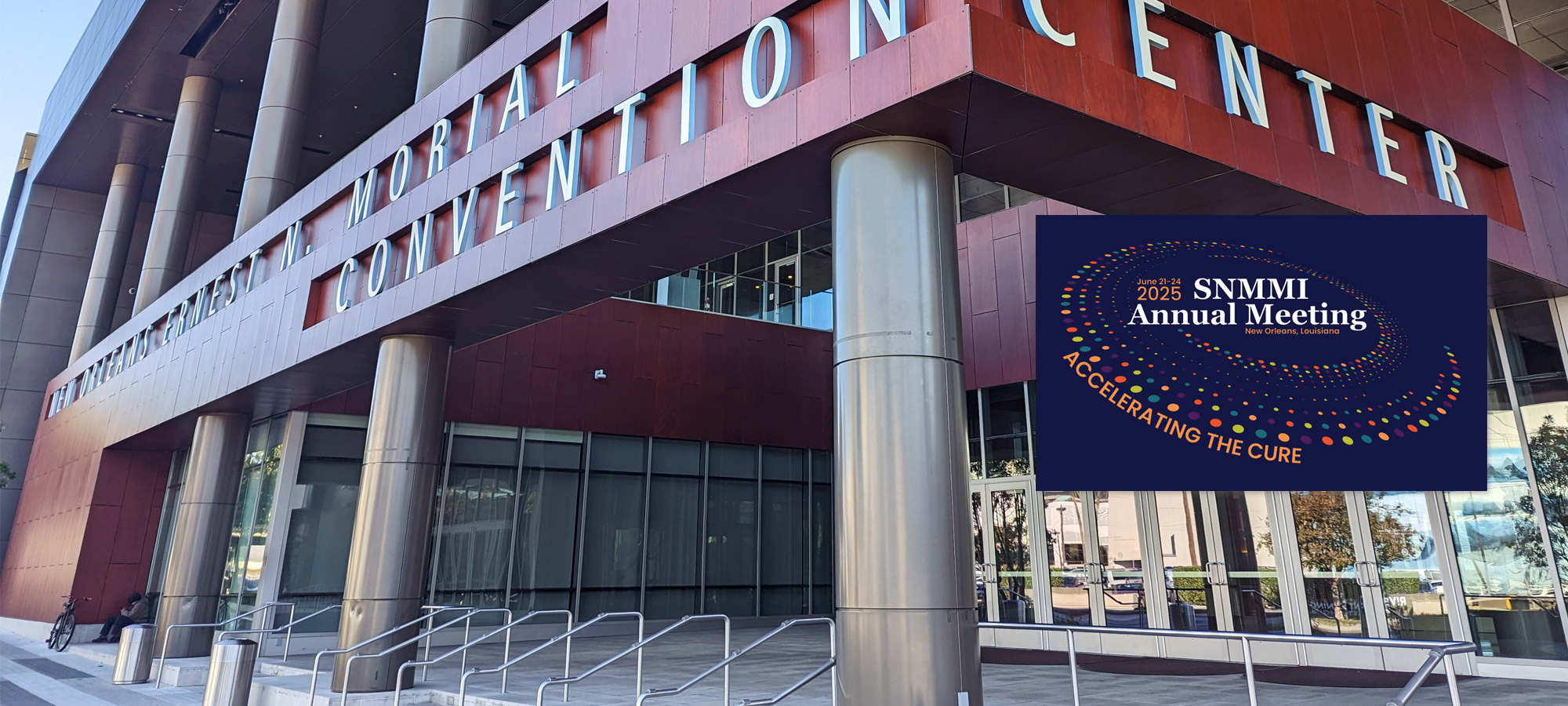In June, the nuclear medicine community gathered in a hot and humid New Orleans for the SNMMI 2025 Annual Meeting. Taking place across 4 days at the New Orleans Ernest N. Morial Convention Center, the event combined expert opinion via its extensive speaker and panel agenda, alongside showcasing cutting-edge innovation courtesy of its exhibition hall.
Whilst exhibiting at the event, Life Couriers spoke to a number of the leading voices to get a gauge of where the nuclear medicine field is at, what problems we’re facing, and where the future is headed. From supply chains to education, regulation to innovation, here are the key talking points from this year’s SNMMI Annual Meeting.
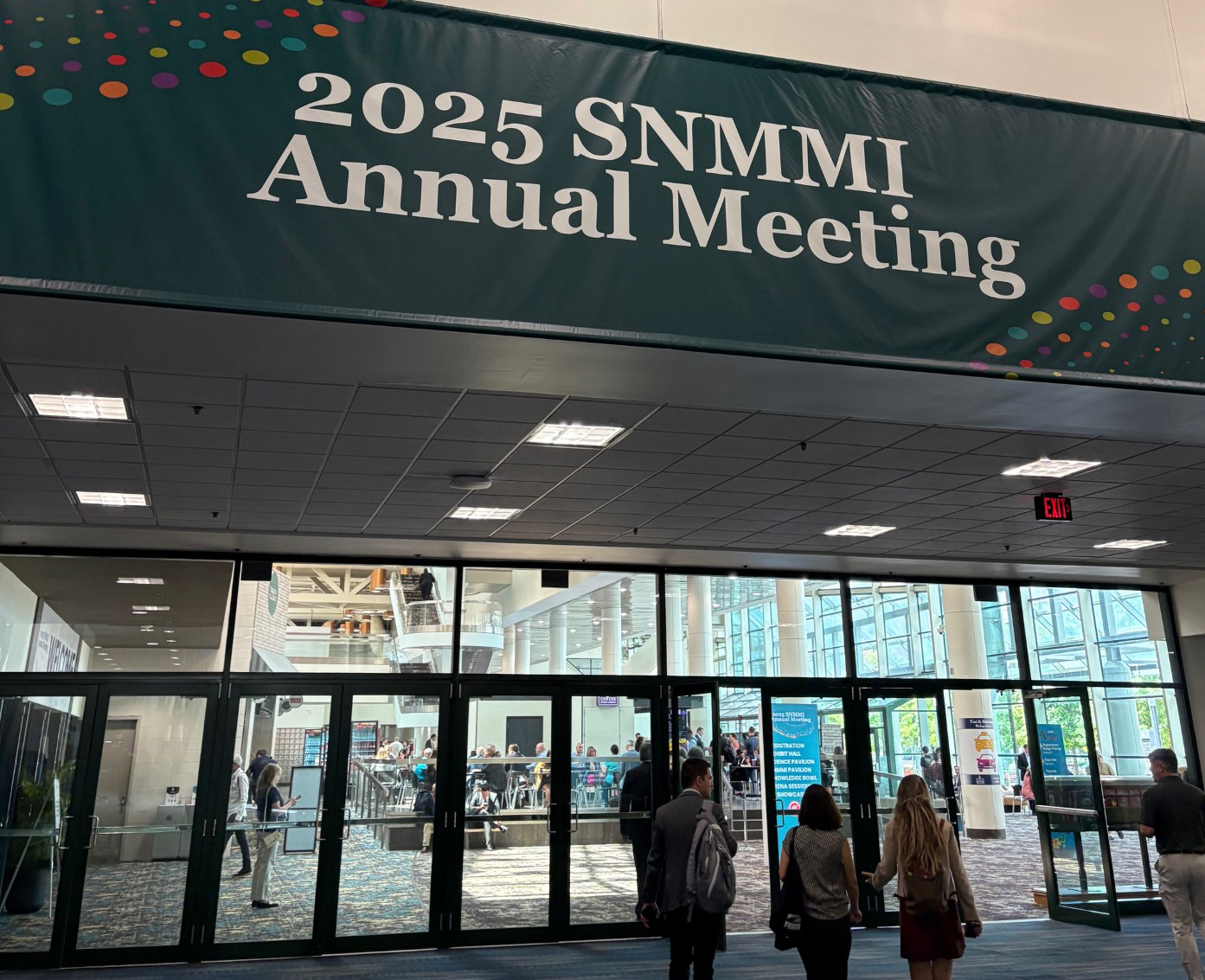
Entering the 2025 SNMMI Annual Meeting, held at the New Orleans Ernest N. Morial Convention Center.
The race to resolve the supply chain
One of the most hotly contested topics this year was the development of Targeted Alpha Therapies, and the ongoing race to produce larger quantities of three key isotopes: Actinium-225, Lead-212 and Astatine-211. Sponsored by Orchestra Life Sciences, a very well attended panel session titled ‘Game of Isotopes: Who Rules Alpha Therapies?’ added fuel to this debate, as representatives from TerraPower Isotopes, Atley Solutions, RadioMedix, RayzeBio and TAG1 contested the differences between these isotopes. The stakes are high too, as Ben Hickley (CEO at RayzeBio) stated: “Whilst it’s maybe not a case of winner takes all, but winner takes quite a lot.”
Ultimately, the debate comes down to two key factors. The first, and currently most pressing, is access. The need for global distribution in high quantities has never been more apparent, and this is where Lead-212 holds a small advantage, being easier to produce and coming from a completely different, more accessible supply chain to Actinium-225 and Astatine-211.
Even so, it’s still not enough – there simply aren’t sufficient quantities of these three isotopes at current to commercialise. There are, however, significant efforts underway to expand and increase capacity, with partnerships between companies across continents to produce as much as possible. An example is the recently announced partnership between IBA and Framatome to set up an Astatine-211 cyclotron network in Europe and the US.
Trasis are one company keeping a keen eye on the supply chain in order to continue delivering their core products: synthesizers, dose dispensers, tracers, consumables and CDMO services. Speaking with Grégory Saive (Executive Director at Trasis), he believes the current supply chain problems to be very much short-term: “The supply issue is just a transition. Yes, we also need more reactors, modular reactors. We need more generators, we need more accelerators. But there’s money so there will be investment. So for now, we wait, and the isotopes will come.”
Whilst the supply chain is of course important, the ultimate factor must simply be whichever isotope performs best in the patient. While early signs are promising for Actinium-225 and Astatine-211, there’s simply too little patient data out there today to draw accurate comparisons. As Cristiana Gameiro-Paris (Domain Expert at IBA) explains: “There are too many factors to consider. It really depends on the type of cancer, the disease presentation, the biological target, biological half-life of the compound… we simply don’t have enough data to say a certain ‘winner takes it all’, and I don’t even think there will be one single winner. I believe different isotopes may be used in depending on the clinical scenario.”
One company trying to stay ahead of the shifting supply chain landscape are TrisKem, who manufacture cartridges for the separation and purification process of isotope production. Steffen Happel (R&D Director at TrisKem) explains how SNMMI is a great place to get feedback from their B2B customers to predict future requirements: “It is always very important to listen to the market to understand what’s happening. You see what kind of products are requested, or what kind of separation is not working as it should be. So that gives us a bit of input, and then you can already, very early, get into R&D and try to work on that for next year.”
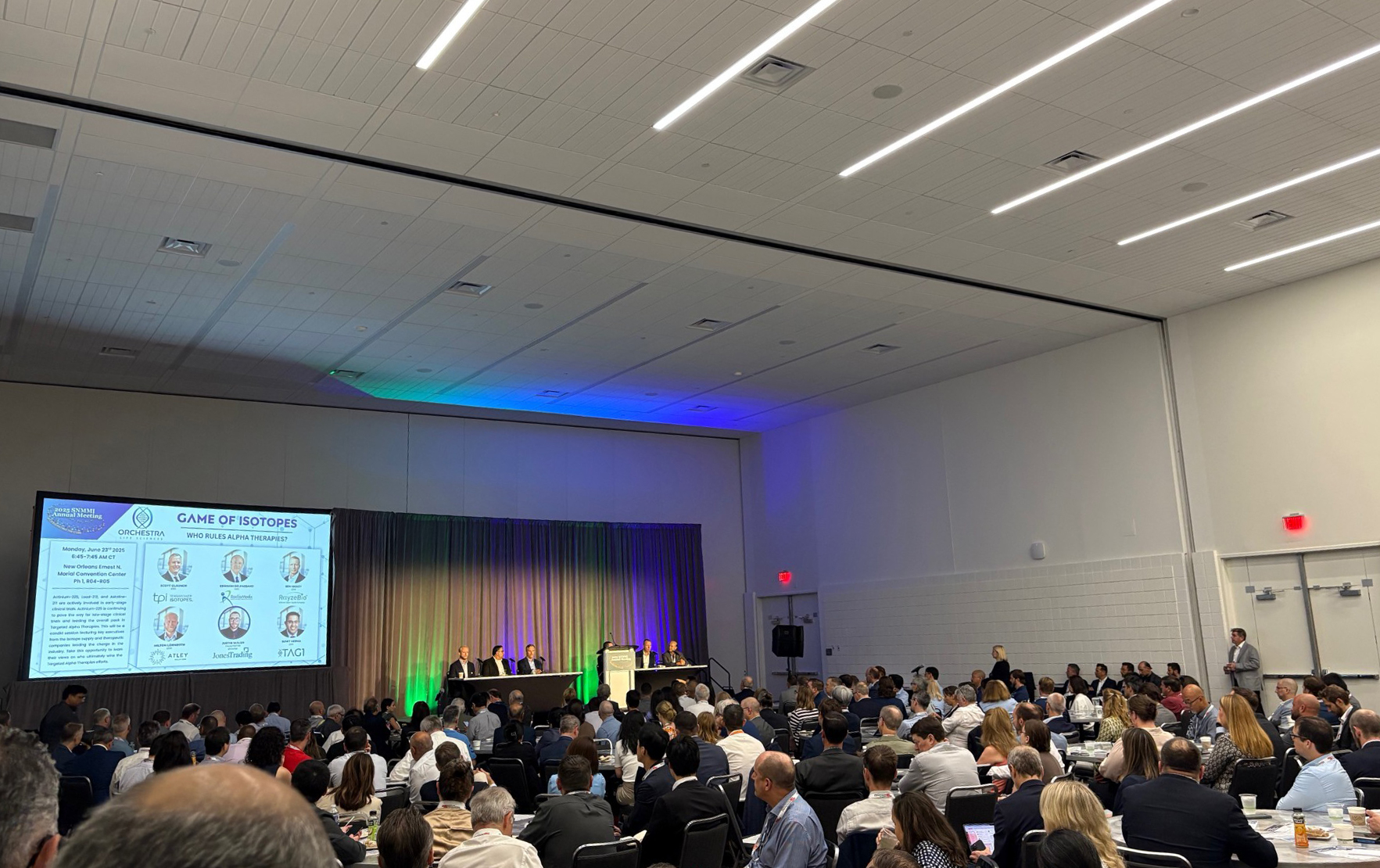
Standing room only for the well-attended panel session, ‘Game of Isotopes: Who Rules Alpha Therapies?’ at the SNMMI Annual Meeting 2025.
Education and recruitment
Another key talking point at this year’s SNMMI was the education system, and the difficulty recruiting and training professionals to keep up with demand.
But this demand hasn’t always been there, as Dr Andrew Stephens (Chief Medical Officer at Life Molecular Imaging) recalls: “Nuclear medicine was sort of dying, it was really quite morbid for a while. But now with the advent of radiotherapy, it’s tremendous. I’ve been in this business for nigh on 30 years, and it’s never been so exciting.”
Dr Wendy Galbraith (Clinical Associate Professor at the University of Oklahoma College of Pharmacy) remembers this time well too. As a nuclear pharmacist with 30 years in the field, she’s seen her fair share of peaks and troughs in the nuclear medicine community, admitting that at its lowest point “it got boring” trying to get people into the field. Now though, with the increased interest and investment in the field again, nuclear medicine faces a new problem: A lack of people.
Galbraith explains: “There’s just not enough training sites. It’s a niche. And with radiology, you say the word ‘radiation’… it takes a certain kind of character that gravitates to something a little bit more risk-based. You also have to have the mind to think outside the box. So it does take something special. But as long as there’s enough people coming through the pipeline, another wave of younger people coming through… but there just isn’t, in general, with the amount of people that are retiring.”
Utilization of AI has the potential to makeup the shortfall in numbers. “With AI, the whole idea is that hopefully we can stay on top of the quality, and then let AI work for us” continues Galbraith. “We have less people coming in to take all of our spots that are retiring, so we’re going to need to use them very wisely.”
Another potential resolution is the cross-training of physicians and technologists to deliver doses. Not only would this allow for more doses to be delivered, but would stop pharmacists from being stretched too thin. Galbraith is in favour of this proposal: “I think that has to be ironed out, recognize that they’re professionals, and give them that responsibility. That’s how we can tackle this: training programs, certificate programs. We’re looking at a certificate program at the University of Oklahoma. An added qualification over a six-week period.”
Grégory Saive (Executive Director at Trasis) agrees, but underlined the need for robust processes: “We need to make it faster to learn. But you need processes, you need regulations in order to facilitate or integrate the training into the business.”
As Cristiana Gameiro-Paris (Domain Expert at IBA) explains, this recruitment challenge is not only at the technical level either: The shortage of engineers and radiochemists is due to lack of undergraduate programs in this area. If we aim to make this a pillar of cancer care, we also must ensure these hospitals are fully equipped with the necessary human resources such as radiation protection, technologists, trained medical doctors, and oncologists.”
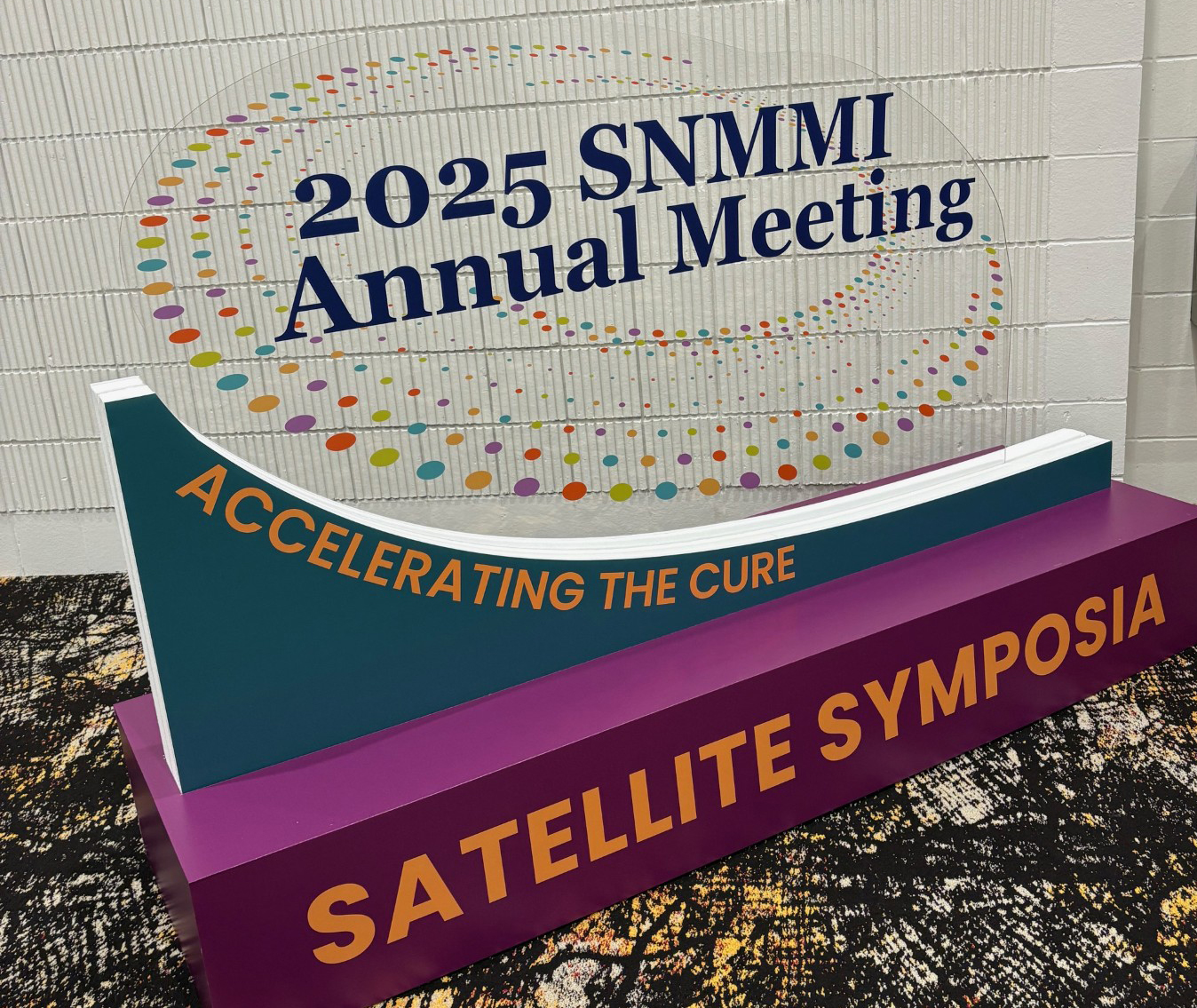
The 2025 SNMMI Annual Meeting provided a wealth of educational opportunities, with keynote and speaker sessions alongside expert panel debates.
Challenging the status quo
Part of the issue with recruitment into the field is the stigma that lingers surrounding the dangers of radiation and all things nuclear. And this stigma doesn’t just exist outside of medicine and healthcare.
XEOS is a relatively new company, founded in 2019 and CE certified in 2022. Their flagship product is a high-resolution mobile PET scanner, which provides surgeons with real-time, 3D images of resections, aiding in the verification of complete resections. The scanner produces these 3D images in just 10 minutes, reducing the need for traditional pathology analysis which can take up to two weeks, and potentially removing the requirement for surgical readmissions. The scanner is seemingly a marvel – so what’s preventing them from being installed everywhere?
“Our competition is basically the status quo.” says Hagen Derde (Head of Sales Europe at XEOS), explaining that surgeons are used to doing things a certain way. “Interruptive assessments or doing frozen sections… things that have been around since forever. So it’s simply education about what the possibilities are.”
“We’re building up the real-world evidence as we speak. So the more cases we do, the more scans and the more images we have. The more people see it, the more they hear about it, and then they see the potential for other applications.”
Cristiana Gameiro-Paris (Domain Expert at IBA) notes the challenge of shifting established medical views: “Even with an effective drug and reliable supply, if oncologists hesitate due to complexity or radioactivity, prescriptions will be limited. We must address these concerns as well and work with the prescriptors of these drugs.”
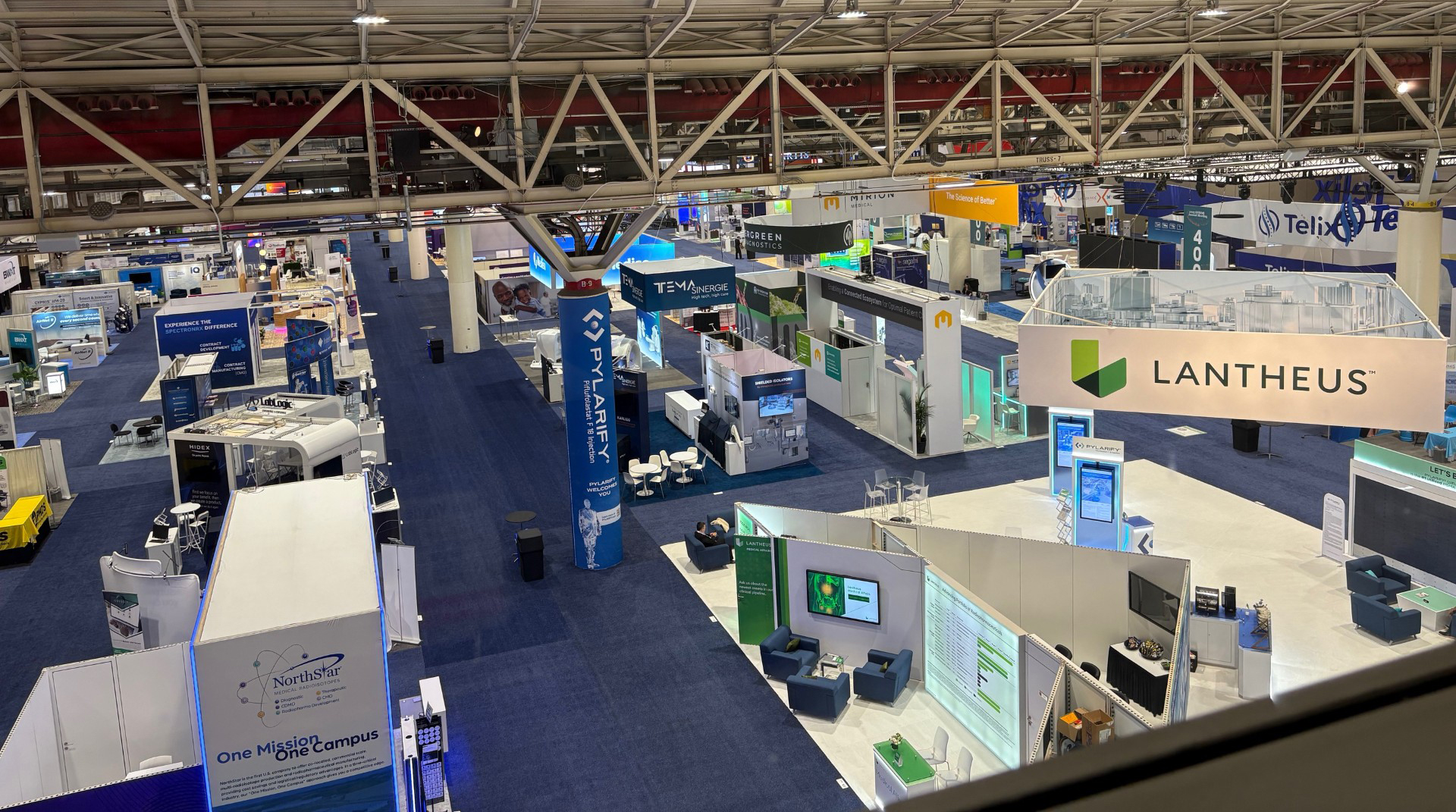
The exhibition hall at the 2025 SNMMI Annual Meeting showcased a range of companies and product developments, all working to advance the field of nuclear medicine.
Precision medicine needs precision regulation
At Life Couriers, we’re no strangers to the intense regulations that come with transporting radioactive materials. Indeed, our primary goal in creating our global radiopharma logistics network is to remove the fragmentation between different countries, particularly in Europe, and provide a singular point of contact for radiopharma shippers.
ABSCINT is a Belgian biotech company developing in vivo imaging products to better diagnose patients, such as their PET tracer for detecting breast cancer. Karine Clauwaert (CEO at ABSCINT) and Gabriel Bolland (Project Manager and Supply Chain Manager at ABSCINT) were attending SNMMI at a key time – with their product in a phase now to be in Europe, they’re looking to expand into the US and are searching for partners.
They’ve thrived inside the Belgian radiopharma ecosystem, a unique hub of nuclear medicine collaboration which already includes the likes of IBA, Trasis, XEOS, Telix Pharmaceuticals, PanTera, IRE and several more. However, the problems start when shipping across country borders, as Bolland explains: “At the end of the day, each country has different regulation… and it’s always bad. When you start to work in this field it’s a very big challenge, because you have to know the people who will be able to help you. So to get authorization, it’s challenging if you don’t know how to do that.”
The requirement for a more cohesive set of regulations in Europe is becoming even more pressing now, as the field, and the sheer number of radioactive shipments, grows. Clauwaert observes: “You already see it in the clinical studies, that they are trying to make a European platform. It’s still a bit complex, because it’s a combination – you have the European platform, but still the local authorities have something to say. But you see that we are evolving to a more harmonized European system, and that really will be helpful.”
Key to the implementation of this is getting the balancing act right: removing unnecessary regulation whilst maintaining the safety and integrity of the materials and parties involved. As Grégory Saive (Executive Director at Trasis) clarifies: “It’s not putting regulation on top of regulation, where it already exists. It’s more rethinking what needs to be done, because the field is evolving.”
Two groups that have a big voice in this area are Nuclear Medicine Europe (NMEU) and the European Association of Nuclear Medicine (EANM). Their influence is key when aligning all the various factions that need to be considered, from manufacturing, supply and logistics, to political implications and security measures.
Cristiana Gameiro-Paris (Domain Expert at IBA) serves as co-chair of the NMEU’s Regulatory Affairs and Quality Assurance group. She expands: “There is a new Directive under review, and NMEU has provided feedback to clarify and streamline regulations. Health Authorities are still familiarizing themselves with the unique specificities in the clinical and GMP (QA) aspects of the field. If European regulations remain fragmented and impractical, access to these drugs in the EU will be restricted. As a result, innovations developed in Europe may benefit US patients due to investment trends and regulatory frameworks encouraging commercialization abroad.”
The US is not without its own regulatory issues though. The tariffs recently announced by the Trump administration are of course fresh in the minds, and whilst drugs are currently exempt from these tariffs, it remains another ever-shifting landscape with the potential for huge consequences for the field.
As Karine Clauwaert (CEO at ABSCINT) explains, “it also depends on how you define the tariffs, as of when do you need to pay it? If it would be helpful to produce in the US, it would be good to know – then you can adapt and do your production or part of your production in the US. So what we need with that respect is clarity and persistency, so we know the direction we are going. If the regulation changes all the time, you need to adapt to a moving target. It’s hard to adapt to a moving target.”
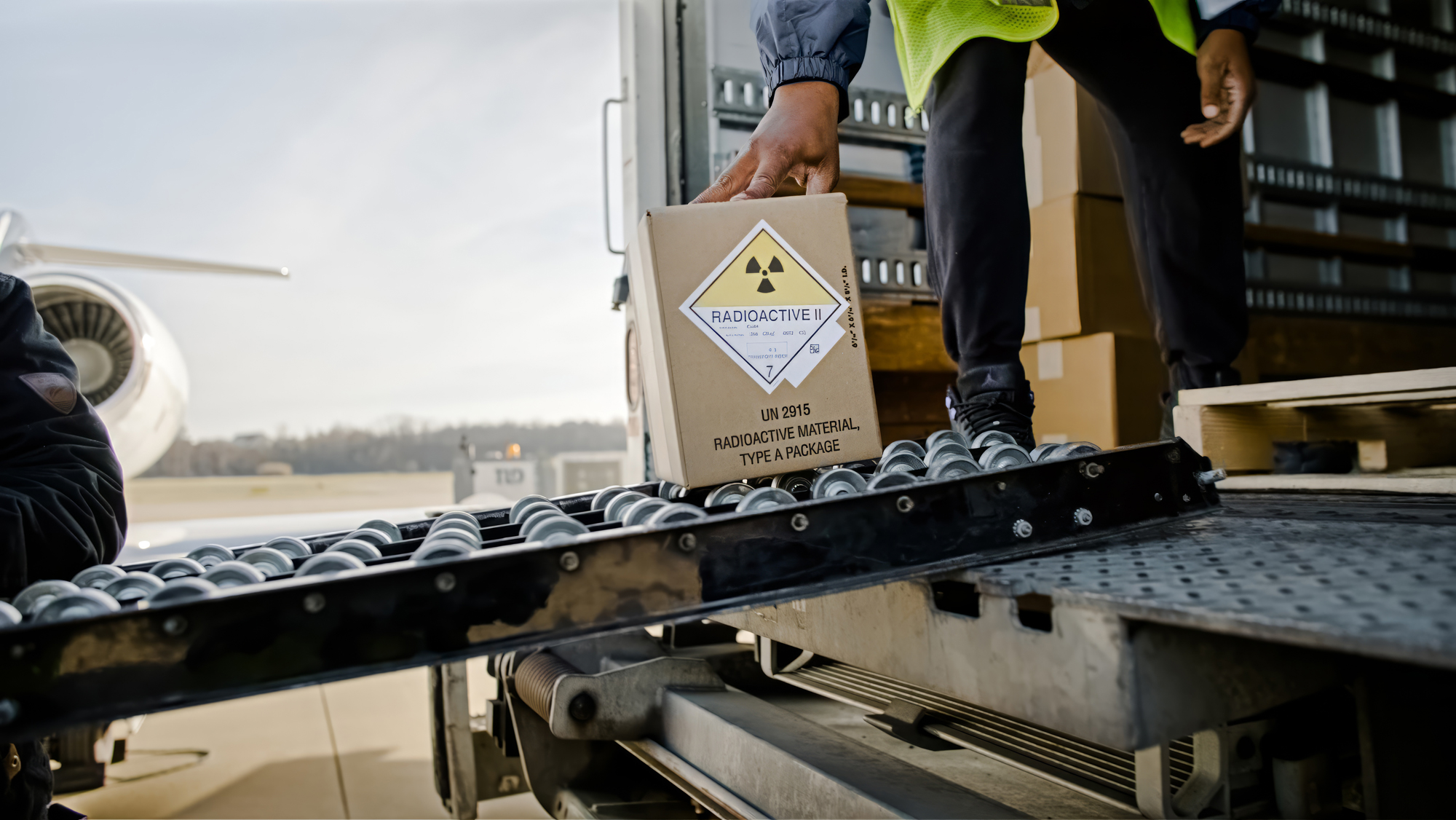
Clear, precise regulations are required in order to keep radiopharmaceuticals moving.
Future predictions
So with all this renewed interest in the field and potentially stratospheric growth on the horizon, where is nuclear medicine headed, and what hurdles do we face?
One thing’s for sure, that the investment and acquisitions show no sign of slowing. Lantheus’ recent announcement of their acquisition of Life Molecular Imaging is just one example, in an upfront payment of $350m that Dr Andrew Stephens (Chief Medical Officer at Life Molecular Imaging) says could change the landscape: “We as a combined company have the potential to be a world-leading both diagnostic molecular imaging company and a radiotherapeutic company. That’s their vision, that’s our vision, and I think we can do it.”
There’s no doubt that the arrival of radiotherapy is the fundamental force driving this field forward. Following Pluvicto and Lutathera is a very healthy pipeline, which could standardise this therapy over the next decade. But as Stephens explains, “we still have so much to learn. We still need to understand long-term toxicity. What are we going to see down the road? And then it gets more complicated, as everyone wants a different isotope. And there’s the question of whether to fractionate? We’re also interested in combination. So there’s a lot of work to do, as there’s a ton of science that’s completely unknown. But we are beginning to understand things. Alzheimer’s for example has a really bright future.”
Dr Wendy Galbraith (Clinical Associate Professor at the University of Oklahoma College of Pharmacy) is also looking ahead to the next molecular disease that could be tackled, particularly with the F-18 isotope. One such application could be in HSV encephalitis for infants. Galbraith explains: “Wouldn’t it be nice if we had something that was better than 21 days of Acyclovir? Now, I’m not saying give a bi-weekly dose of radionuclide, but it would be nice to be able to image something like that without doing a spinal tap. If I’m a parent, and you can either have this little IV injection and do a scan of the head, or we can do a spinal tap on your kid again and hope you don’t get blood in there to contaminate it? So I think we can expand our non-invasive biopsy in methods for all kinds of diseases. I think cyclotrons, PET cameras… that’s the next 10 years.”
Cristiana Gameiro-Paris (Domain Expert at IBA) is also excited by the “unbelievable diversified pipeline” in nuclear medicine, highlighting the first successes from PSMA for prostate cancer, and SSTR drugs for neuroendocrine tumors to other applications such as breast cancer, colorectal, pancreatic, and other areas. There’s “so much hope” on the horizon.
Looking ahead to EANM’25
The next major event in the nuclear medicine community is the EANM Annual Congress 2025, due to take place in Barcelona in October. Life Couriers will be there, as we continue to deliver hope to patients across the world through precision logistics, enabling this important field of medicine. Because we know that at the end of every delivery is a person, and a family, that deserve the best chance of a healthy life.
Karine Clauwaert (CEO at ABSCINT) encapsulates the mission succinctly: “Precision medicine is important, so that we can get the right people access to therapy at the right moment. And we do that in a smart way to give people a good quality of life.”
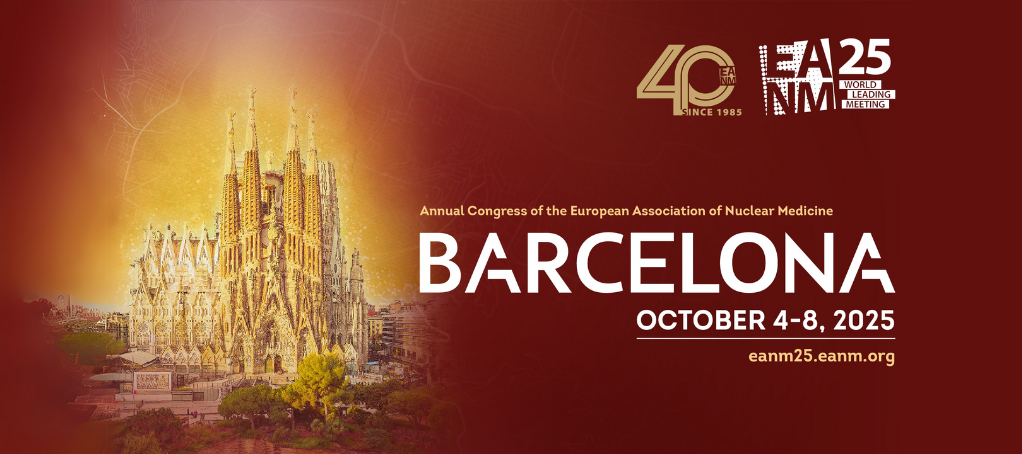
The next major event in the world of radiopharma, EANM Annual Congress 2025.
